The ocean is home to innumerable species of fish, plants, and other life, but nowhere is that more evident than in coastal reefs – some of the most diverse and abundant ecosystems on the planet. In Open Ocean from Featherstone Games you get to live out your inner marine biologist and help repair the damage done by a typhoon. The fish and other creatures have fled into the open ocean and it’s your job to entice them back to their homes to begin the process of rebuilding. Join me as I review Open Ocean.

Open Ocean Overview
In Open Ocean players manage their own personal coral reef composed of cards (fish, sharks, turtles, anemone, and coral) all gorgeously illustrated by game designer Joel Bodkin. Over the course of three rounds players will build up their reef by playing cards from their hand to their reef system and attracting fish from the open ocean back to the reef where they belong. Players will earn points by forming patterns and combinations of different species of fish, collecting the most varied colors of coral, and strategically placing sea turtles around the edges of your reef. Players can also earn bonus points from public and private bonus goals. The player with the most points at the end of the game is the winner.
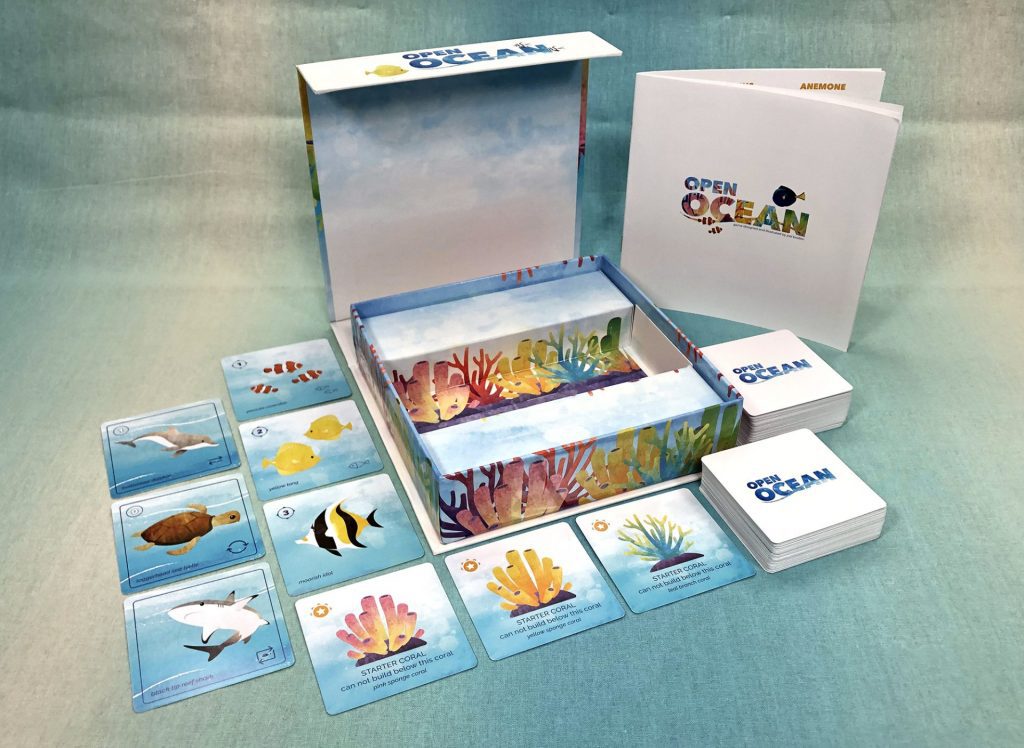
Open Ocean Setup & Gameplay
The setup for Open Ocean is relatively simple. Each player will get a starter coral card which is the anchor for all other cards in your reef. Shuffle all the remaining cards and create a deck, then deal a 3 by 3 grid of face up cards with the deck placed into the middle. This is the “open ocean” where much of the action in the game happens. Each player gets a starting hand of 6 cards, and you’re ready to build.

Open Ocean is a card drafting game which means that players will simultaneously select a card from their hand and place it face down in front of them. Each player will then reveal their card in turn order and resolve any actions on the card. Players then pass the remainder of their hand to the player on their left. Continue playing this way until players only have 1 card left, at which time the round is over. Repeat this process twice more to complete the game.
Open Ocean Actions
The heart of the game are the actions. The action on the card is indicated by the icon in the lower right corner of the card.
- Attract Tiny Fish – This icon is found on Coral cards and allows you to attract a tiny fish card to your reef. The tiny fish card features three small fish.
- Attract Medium Fish – This action is displayed on the Tiny Fish card and allows you to attract a medium sized fish card to the reef. The medium sized fish card features a pair of medium sized fish.
- Attract Large Fish – This action is displayed on the Medium Fish card and allows you to attract a medium sized fish card to the reef. The large sized fish card features a single larged sized fish.
- Exchange Dolphin – This action is found on Dolphin cards and allows you to swap the dolphin card for a card in an opponent’s reef, then play that card into your reef immediately.
- Exchange Shark – Exchange the Shark card for any one card in the open ocean, playing it immediately into your reef and taking any actions found on the fish card. Be careful though,if there are ever three shark cards in the open ocean at the end of a turn then all face up ocean cards must be discarded and replaced with new cards. This triggers a Feeding Frenzy which additionally causes each player to lose their largest “unprotected fish” from their reef (more on that in moment).
- Refresh – This action is found on sea turtles and it allows you to discard all cards from the open ocean. Then take one of the newly dealt cards and place it into your reef and resolve any actions. Finally you take the turtle card and place it at the edge of your reef.

Open Ocean Card Placement
While card placement in Open Ocean is fairly simply, there’s a few things that tripped us up in our first play. So let’s talk through the restrictions in hopes it might help you avoid any play issues.
Everyone begins the game with a starter Coral card which should be placed near the edge of the table, which represents the sea floor. Thematically nothing can be placed lower than the starter card.
Once a card is placed, it cannot be moved unless done so by an action card.
Cards with sun icons on them must be adjacent to other sun cards (horizontally, vertically, or diagonally). Because Coral and Anemone cards are the only ones with sun icons, this is again thematic; coral builds on coral.
Anemone cards look very similar to Coral cards but help protect fish from the ravages of a Feeding Frenzy. Any fish card within the immediate radius of an Anemone card is safe.
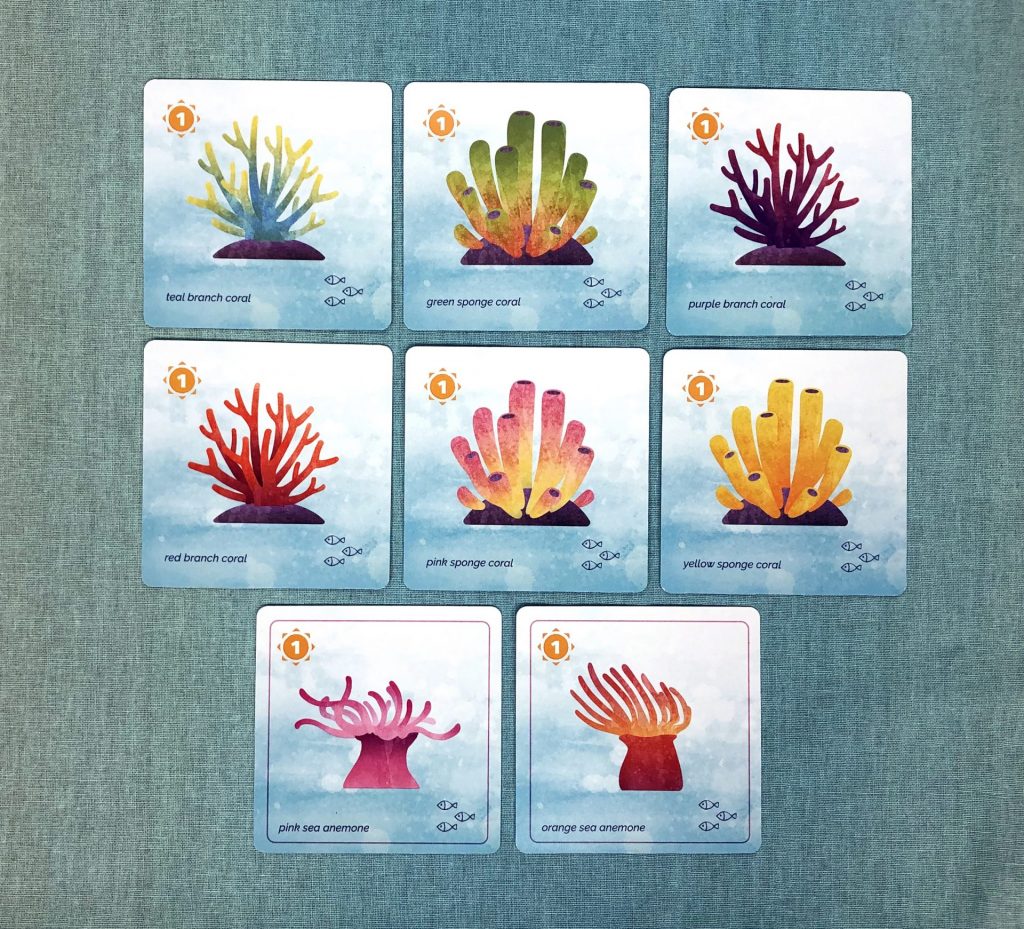
Fish cards must be connected either horizontally or vertically to another fish card (no diagonals here) AND be either connected by type or by size. At the end of the game you’ll receive bonus points for schools of the same fish type, so bear that in mind when placing. The fish cards gave us the most trouble because of the iconography and the illustration. The Tiny Fish card card has an illustration of three small fish, but the action icon displays two fish. It took us 5 or 10 minutes to understand that we were playing it wrong. We were mentally trying to match up the two fish illustration with the two fish icon…and that didn’t work out so well for us.
Additionally the rules say that “fish cards may be placed in order” going from “sun 1 2 3”. This is thematic in the sense of the food chain, but there didn’t appear to be any scoring incentive for having fish in ascending order. This feels like a relatively easy way to inject points for players who can plan ahead, so my suggestion would be to consider some way to allow scoring for “fish in order”…they could call it “the Food Chain Bonus”.
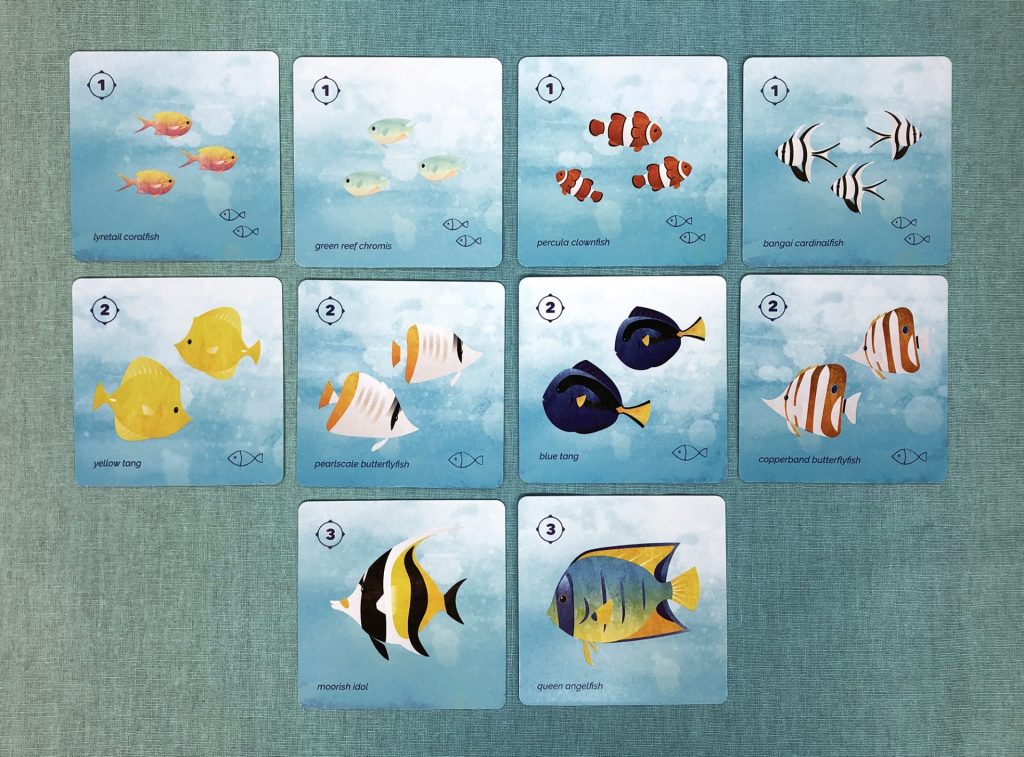
Open Ocean Scoring
At the end of the game players will score points for the following.
- Base points – Total up the points printed on the upper left corner of any card in your reef
- Schools – Fish which are in groups of two or more of the same type are considered to be in a school. This will earn one additional point per fish in each school.
- Coral color bonus – Players will receive increasing higher bonus points for every unique color coral in their reef.
- Bonus goals – Add any bonus points from public or private goals
The player with the most points wins.
Open Ocean Final Thoughts
When an email from the publisher introduced me to Open Ocean I was entranced by the artwork. The simple shapes have depth and beauty thanks to the texture and shading skillfully applied by Joel Bodkin. The theme sounded pretty great too; I mean who doesn’t love coral reefs right? Turns out I might have a type given that I’ve previously reviewed Reef, and The Great Barrier Reef Card Game.
While we enjoyed our time with Open Ocean, we still had some stumbles. As mentioned above the gameplay had some rocky spots, primarily around iconography or rulebook clarity. For example, even though the box says 2-5 players the rulebook immediately jumps to “3-5” on the first page of rules. A simple line of text reading “For two player games go to page 12” would have smoothed things over. Additionally there were the icon issues I mentioned previously. Perhaps a rethinking of where icons or placed, or some additional clarity around the icons themselves might help.
Open Ocean is a fine game, with an appealing theme, vibrant, gorgeous artwork, and nifty gameplay. Once we got over some of the minor hurdles, the game played smoothly and easily. There were definitely some clever choices to be made, when to steal a card from an opponent’s reef with a Dolphin card, or timing it just right so that when you played a Shark card to the open ocean so that a card that would benefit an opponent was discarded. Even though our group had some issues, Open Ocean isn’t just a pretty face, there’s a solid game here.
Open Ocean plays quickly (in around 30 minutes), and would be a great game to play with the family. Open Ocean is a great way to introduce your kids to the wonders of reef life, all in card game format. You could even use it as a way to guide the conversation to the ecological issues plaguing coral reef systems.
It may be hard to believe that the quality of the items inside the box was a prototype, but it sounds like the rules and some gameplay aspects could benefit from a bit more tweaking. It has a top-fold box with magnetic clasp, spot varnish on the lettering and feels like I could have picked it up at a store. Backers of this Kickstarter will be thrilled at what they get with their pledge…that could be you!


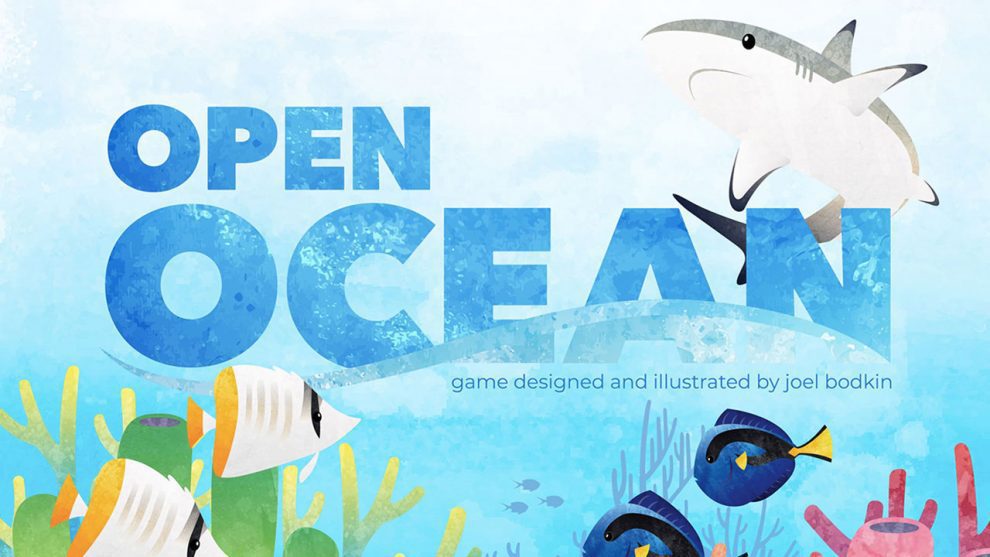

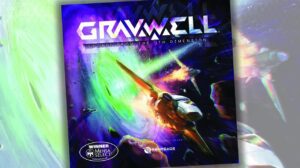

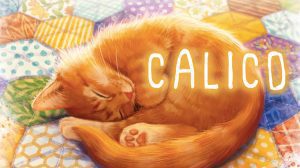




Thanks for a great review!